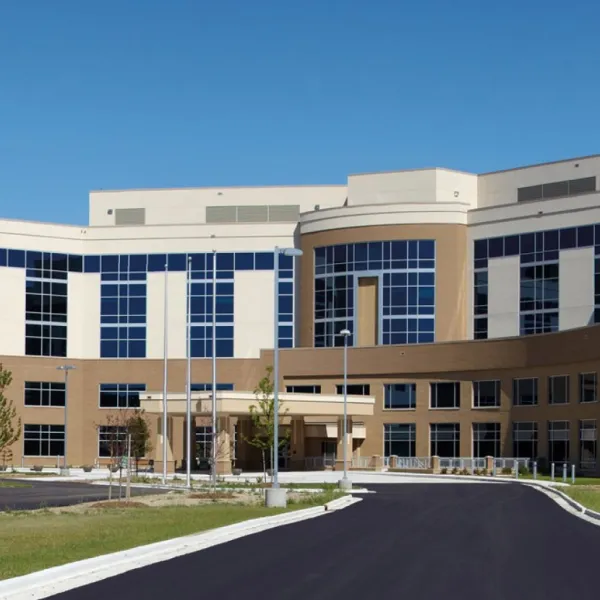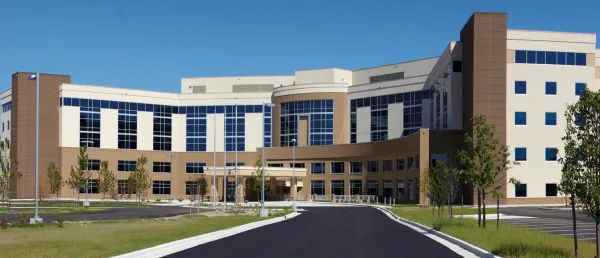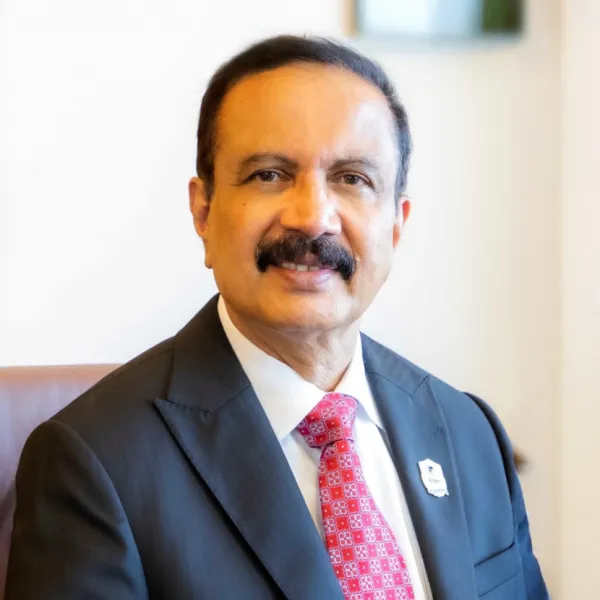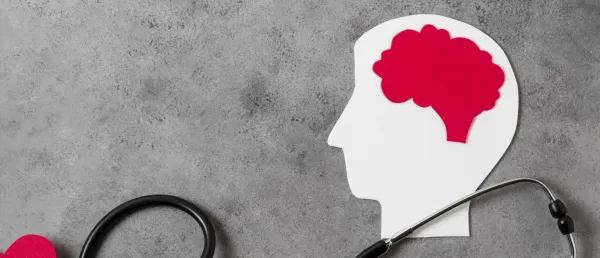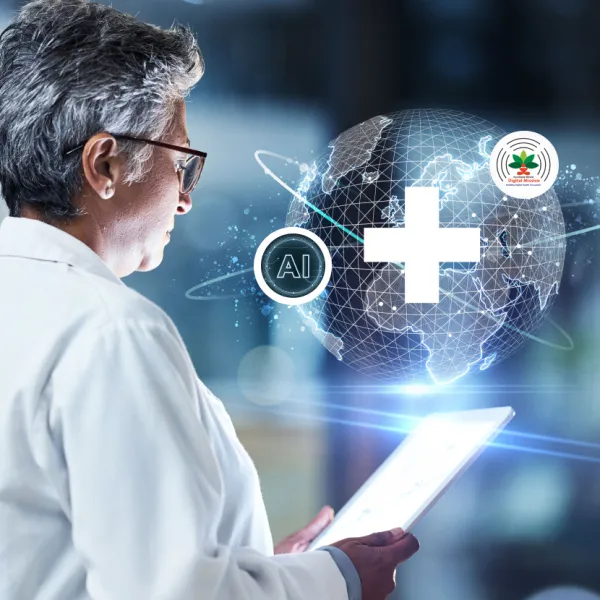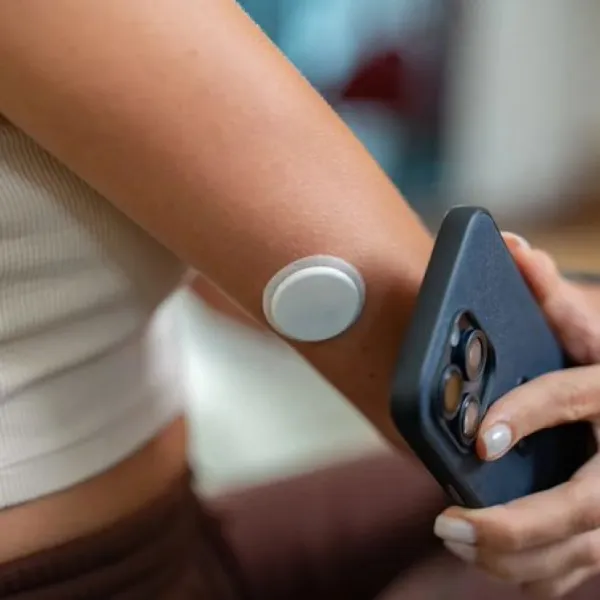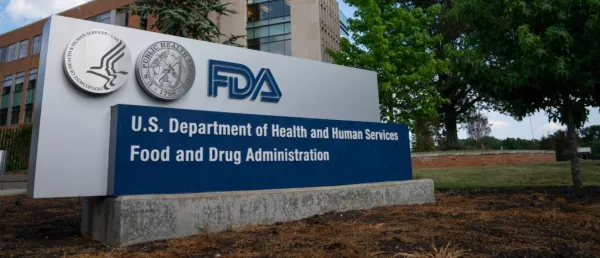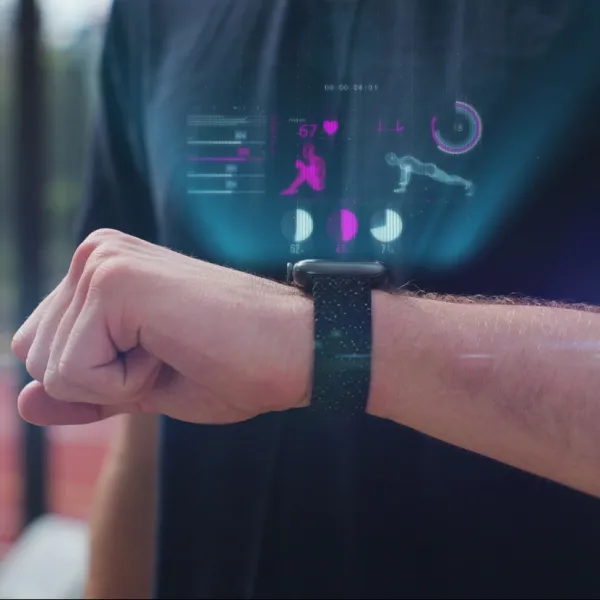Code Redefined: Inside Metro Hospitals’ Digital Health Overhaul with Mohit Tandon

In an era where technology is reshaping every facet of healthcare, Metro Group of Hospitals stands at the forefront of India’s digital revolution. Spearheading this transformation is Mohit Tandon, Vice President of Information Technology, whose visionary leadership is redefining how patient care and innovation converge.
In this exclusive conversation with Dr. Aishwarya Sarthe of DHN, we delve deep into Metro Hospitals’ ambitious journey, unpacking cutting-edge AI, cloud adoption, IoT integration, and robust cybersecurity measures that set new benchmarks for hospital chains across India. This is not just an IT upgrade; it’s a bold reimagination of healthcare delivery for the future.
Q: What are some key priorities and opportunities you foresee for IT transformation at Metro Hospitals in the current healthcare landscape?
A: IT transformation in healthcare, especially for institutions like Metro Hospitals, is an urgent necessity and a significant opportunity. Given the current healthcare landscape shaped by digital acceleration, patient-centric models, and regulatory changes, here are key priorities and opportunities to consider:
1. Enhancing Patient Experience and Engagement
o Unified Patient Portals: Integrate EHR, telemedicine, billing, appointment systems, to name a few.
o Mobile-first Approach: Development and deployment of mobile apps to enhance the patient experience when booking appointments, accessing records/lab reports, and communicating with clinicians. A doctor app will be introduced that will help doctors remain connected with their patients and their reports, vitals, etc., while they are anywhere in the world.
o Personalized Communication: Use AI to automate and personalize reminders, follow-ups, and care plans for patient. This will take patient experience to next level.
2. Interoperability and Data Integration
o EHR Modernization: Ensure systems comply with FHIR standards to improve data exchange between departments and external providers.
o Data Lakes and Warehousing: Consolidate clinical, operational, and financial data into a unified platform for analytics and reporting.
3. Cybersecurity and Data Privacy
o Zero Trust Architecture: Transition to a more secure, identity-focused security model.
o Proactive Threat Detection: Leverage AI and machine learning to identify potential threats and anomalies in real-time.
o Compliance Management: Ensure HIPAA, GDPR, and local health regulations are continuously met and auditable.
4. Telehealth and Remote Care Infrastructure
o Scalability: Invest in scalable cloud infrastructure to support surges in virtual visits.
o Remote Monitoring Integration: Incorporate IoT and wearables into the care continuum for chronic disease management and post-op recovery.
5. AI and Automation in Clinical and Administrative Workflows
o Clinical Decision Support: Deploy AI tools that help physicians with diagnostics, risk prediction, and treatment planning.
o RPA (Robotic Process Automation): Automate billing, claims processing, and administrative paperwork to reduce overhead and errors.
6. Workforce Enablement and Training
o Change Management: Invest in training clinicians and staff to adapt to new technologies.
o Digital Literacy: Focus on cross-functional upskilling to bridge clinical and technical roles.
Strategic Opportunities
1. Population Health Management
o Use predictive analytics to identify at-risk groups and develop preventive care strategies. This supports value-based care models and improves outcomes.
2. Partnerships and Ecosystem Integration
o Collaborate with health tech startups, universities, and pharma companies to co-create digital health solutions or participate in research networks.
3. Cloud-First Strategy
o Migrate infrastructure and applications to cloud platforms to improve agility and disaster recovery capabilities.
4. Digital Twins and Simulation
o Leverage digital twin models for hospitals to simulate patient flow, optimize resource allocation, and enhance emergency preparedness.
5. Sustainability and Green IT
o Implement energy-efficient data centres, digital forms over paper-based processes, and smart building systems as part of a broader ESG strategy.
6. Precision Medicine Initiatives
o Enable genomic data integration and AI-driven research platforms to support personalized treatment protocols.
Q: Based on your experience, what common gaps do you see in hospital IT systems, and how do you plan to address those at Metro from the outset?
A: Great question—recognizing common gaps in hospital IT systems early can dramatically improve outcomes during an IT transformation. Based on extensive industry patterns and best practices, here are common gaps I often see in hospital IT environments, followed by strategies to address them proactively at Metro Hospitals:
Common Gaps in Hospital IT Systems
· Multiple non-integrated applications across departments.
· Lack of a wow factor in patient experience.
· Systems don’t easily exchange data with external providers/biomedical equipment, etc.
· Outdated Legacy Infrastructure - Critical systems running on aging, on-premises servers with high maintenance costs and limited scalability.
· Inability to support newer technologies like AI, mobile apps, or cloud platforms due to the ongoing adoption of older technologies.
· Low User Adoption and Clinician Burnout - IT tools are often not aligned with clinical workflows, leading to frustration.
· Limited Cybersecurity Maturity - Reactive rather than proactive approaches to threats.
· Gaps in patch management, endpoint protection, and identity access controls.
· Inadequate Analytics and Decision Support - Poor data quality and a lack of real-time dashboards or predictive analytics tools.
· Underutilization of patient and operational data for clinical and strategic decisions.
· Telehealth Bolt-ons Instead of Integration - Rapid telemedicine adoption during COVID often led to disjointed solutions that don’t integrate well with the EHR or scheduling systems.
Planned Approach to Address These Gaps at Metro from the Outset
1. Conduct a Holistic IT Landscape Review
o Perform a systems audit to map all existing platforms, integrations, and redundancies.
o Identify high impact "quick wins" (e.g., redundant applications, outdated servers).
2. Implement a Modern, Interoperable Platform Architecture
o Prioritize EHR systems and platforms that support FHIR, APIs, and real-time data exchange.
o Use middleware or integration engines (like Mirth) to bridge silos.
3. Cloud Migration Strategy
o Move non-clinical systems (e.g., HR, finance) to cloud-based solutions first.
o Gradually migrate clinical systems to hybrid cloud setups for scalability and continuity.
4. User-Centric Design and Training
o Involve clinical staff in IT design and testing to ensure fit-for-purpose solutions.
o Establish continuous training programs and a "super user" network in each department.
5. Security-First Approach
o Adopt Zero Trust principles and conduct regular penetration testing and risk assessments.
o Deploy Security Information and Event Management and automate alert triage.
6. Build a Centralized Data and Analytics Hub
o Implement a data lake with standardized data governance.
o Deploy real-time dashboards and predictive analytics for clinical, financial, operational metrics, and management. This will help analyse real-time data throughout the day.
7. Fully Integrated Telehealth Ecosystem
o Redesign telemedicine workflows to fully embed into the EHR, scheduling, billing, and patient portal.
8. Governance and Sustainability
· Establish an IT governance board including clinicians, IT leaders, compliance officers, and patient representatives.
· Implement an agile IT delivery model, allowing faster deployment and iteration of feedback-based tools.
By methodically tackling these gaps, Metro Hospitals can soon build a resilient, agile, and future-ready digital health infrastructure.
Q: In your view, what are the biggest challenges in implementing tech-driven workflows in hospitals without disrupting clinical efficiency?
A: Implementing tech-driven workflows in hospitals holds great and different experiences, but doing so without disrupting clinical efficiency is a major challenge. The biggest challenges include a mix of cultural, technical, and operational factors. Here’s a breakdown of the top ones, along with key strategies to mitigate them:
1. Clinician Resistance to Change
Challenge: Clinicians and nurses often see new technologies as burdens rather than enablers, especially if they add time or complexity to their workflow.
Solution:
· Involve clinicians early in the selection, design, and testing of workflows/process in software.
· Use clinicians as domain champions to drive for the benefits of new workflows and its adoption.
· Prioritize usability and minimal clicks—optimize for how clinicians work specially when patient load is too high.
2. Workflow Disruption During Transition
Challenge: Rolling out new systems (e.g., a new EHR/updated version of existing EHR or decision support tool) often causes temporary chaos, slowing down patient care and frustrating staff.
Solution:
· Use a phased rollout strategy (pilot, scale, refine).
· Deploy parallel run periods where new and old systems coexist during transition.
· Have dedicated floor support teams (super users and IT staff) on site during go-live till the entire team adopts the system completely.
3. Poor Integration with Existing Systems
Challenge: New technologies often don’t communicate well with existing EHRs, PACS, lab systems, etc., creating duplicate work or data silos as existing system uses too old technologies which needs to be upgraded.
Solution:
· Mandate interoperability standards (HL7) in vendor selection.
· Invest in integration platforms (e.g., middleware or APIs) to streamline data exchange.
4. Inadequate Training and Support
Challenge: Insufficient or poorly timed training leads to underuse or misuse of new systems.
Solution:
· Develop role-based, hands-on training tailored to clinical scenarios.
· Provide just-in-time learning resources (videos, manuals specially with step wise screenshot which are self-understood by respective user).
· Offer 24/7 Go-Live support for the first weeks of deployment.
5. Lack of Real-Time Feedback Mechanisms
Challenge: Users encounter issues but don’t have a clear way to report them or see their concerns addressed.
Solution:
· Set up real-time feedback system.
· Implement rapid response protocols to resolve high-priority issues with highest stipulated timelines.
· Use weekly huddles or dashboards to share updates and improvements made.
6. Misalignment With Clinical Goals
Challenge: Technology rollouts driven by IT may not reflect frontline clinical priorities.
Solution:
· Anchor all IT projects in clinical value—improved safety, speed, or quality of care.
· Align initiatives with key performance indicators (KPIs) used by care teams (e.g., reduced time to documentation, fewer duplicate tests).
7. Infrastructure Constraints
Challenge: Inadequate Wi-Fi coverage, outdated devices, or insufficient bandwidth can derail even the best software.
Solution:
· Conduct infrastructure readiness assessments before rollout.
· Invest in mobile device management, hardware upgrades, and reliable connectivity in clinical zones.
By addressing these challenges from a clinically driven, IT-enabled perspective, Metro Hospitals can achieve smoother implementation and adoption of digital workflows—ultimately improving both efficiency and care quality.
Q: What emerging technologies—AI, cloud, IoT—do you believe are most relevant for mid-to-large scale hospital chains in India today?
A: For mid-to-large hospital chains in India, emerging technologies like AI, cloud, and IoT are not just buzzwords—they're crucial tools for improving care quality, operational efficiency, and patient experience in a resource-constrained yet rapidly digitizing healthcare ecosystem. Here’s a breakdown of the most relevant technologies today and why they matter specifically in the Indian context:
1. Artificial Intelligence (AI) and Machine Learning
· Addresses the shortage of medical specialists and rising patient volumes.
· Enables faster, more accurate clinical decision-making in both urban and rural settings.
Key Use Cases:
· AI Radiology Tools: Early detection of TB, lung cancer, fractures, and brain haemorrhages.
· Predictive Analytics: ICU readmission risk, patient deterioration alerts.
· Natural Language Processing: Automating clinical documentation and medical coding (reducing clinician burnout).
· Chatbots and Virtual Assistants: First-level triage, appointment booking, and medication reminders in regional languages.
2. Cloud Computing and SaaS Platforms
· Offers scalability and cost efficiency for hospital chains expanding across geographies.
· Reduces dependency on legacy, on-prem infrastructure.
Key Use Cases:
· Cloud-based EHRs: Real-time access to records across facilities.
· Centralized Data Repositories: For unified analytics, compliance, and audit purposes.
· Disaster Recovery: Essential for multi-location resilience.
· Interoperability and Telemedicine: Easier integration with third-party apps, national health infrastructure like Ayushman Bharat Digital Mission (ABDM).
3. Internet of Things (IoT) and Remote Monitoring
· Enables continuity of care in tier-2/3 cities.
· Vital for chronic disease management in a country with a growing non-communicable disease burden.
Key Use Cases:
· Wearable Devices: Remote vitals monitoring for cardiac, diabetic, and elderly patients.
· Smart ICUs and Connected Beds: Real-time patient data streaming into central command centres.
· Cold Chain Monitoring: IoT sensors for vaccine and drug temperature control.
· Asset Tracking: Real-time location tracking for critical equipment (ventilators, infusion pumps).
4. Robotic Process Automation (RPA) & Workflow Automation
· Reduces manual errors and operational burden in high-volume administrative workflows.
Key Use Cases:
· Claims Processing Automation
· Inventory Reordering
· Digital Patient Onboarding
· Auto-scheduling and Follow-up Coordination
5. Cybersecurity (AI-powered Security, Zero Trust)
· Increasing digital adoption also means higher exposure to cyber threats.
· India's hospitals are increasingly targeted by ransomware attacks post covid.
Key Use Cases:
· AI-based Threat Detection
· Multi-factor Authentication (MFA)
· Data Encryption and Compliance Tools for HIPAA and Indian data privacy laws.
6. Genomics and Precision Medicine Platforms (Emerging)
· Still in early stages in India but gaining traction in cancer care and personalized medicine.
Potential Uses:
· Integration of genomics into EHRs for oncology and rare disease treatment protocols.
For a hospital chain like ours, integrating AI-enabled diagnostics, cloud-first EHRs, and IoT-based remote care, while strengthening cybersecurity and automating admin tasks, can dramatically improve scalability and patient-centric service delivery across India’s diverse healthcare landscape.
Q: Cybersecurity continues to be a concern in healthcare. What foundational steps do you think every hospital IT team should take to secure patient data?
A: Cybersecurity in healthcare is no longer just an IT issue; it’s a patient safety issue. Given the rise in ransomware attacks and data breaches globally (with healthcare being one of the most targeted sectors), securing patient data must be treated as a mission-critical function.
Here are the few steps that every hospital IT team especially in rapidly scaling hospital should take to secure patient data:
1. Establish a Cybersecurity Governance Framework
· Appointment of a dedicated security lead.
· Create a Security Policy Framework: Cover data handling, access, vendor security, and incident response.
2. Data Classification and Inventory
· Identify and classify all patient-related data assets.
· Map where data resides—on-premises servers, cloud, endpoints, third-party systems.
· Know your data flows (how information is transmitted across internal systems and external partners).
3. Identity and Access Management (IAM)
· Role-Based Access Control: Limit access based on clinical or administrative roles.
· Multi-Factor Authentication: Mandate MFA for all remote and privileged access.
· Regularly review and revoke dormant or outdated user accounts.
4. Network and Endpoint Security
· Segment the network to isolate critical systems.
· Installation of Next-Gen Firewalls.
· Deploy Endpoint Detection and Response (EDR) tools to monitor hospital devices.
5. Data Encryption – At Rest and In Transit
· Encrypt all patient data stored in databases, servers, and cloud platforms.
· Use SSL/TLS for data transmitted over networks, including internal hospital systems.
· Ensure mobile devices and USB drives are encrypted if used for patient data.
6. Staff Awareness and Training
· Conduct regular cyber hygiene training for all staff—including clinicians,etc.
· Use phishing simulations to test readiness and awareness.
· Make data protection part of onboarding and clinical compliance audits.
7. Incident Response and Recovery Plan
· Develop a formal incident response plan (IRP) with clear escalation paths.
· Set up 24/7 threat monitoring and response capabilities.
· Test the plan with tabletop exercises or simulated ransomware attacks.
8. Secure Third-Party and Cloud Integrations
· Perform security due diligence on all vendors.
· Ensure Business Associate Agreements are in place.
· Use API gateways with monitoring and rate limiting to prevent abuse.
9. Regular Patching and Vulnerability Management
· Set up automated patch management systems for OS, firmware, and applications.
· Conduct regular vulnerability scans and penetration testing—at least quarterly.
· Maintain a threat intelligence feed to stay ahead of known vulnerabilities.
10. Compliance and Audit Readiness
· Ensure compliance with HIPAA, DPDP Act and NABH IT standards.
· Maintain audit logs and access trails for all systems handling patient data.
· Use SIEM (Security Information and Event Management) platforms for central log monitoring.
Securing patient data is not just about avoiding fines—it’s about preserving trust and ensuring patient safety. Starting with these foundations, i will position Metro Hospitals as a digital leader with robust cyber resilience.
Q: Given your exposure across multiple healthcare institutions, what best practices have you seen in aligning IT with clinical outcomes?
A: Aligning IT with clinical outcomes is one of the most impactful yet often under-realized goals in healthcare digital transformation. From my experience across multiple healthcare systems—both mature and emerging—here are the best practices that consistently drive success in bridging IT and clinical impact:
1. Start with Clinical Outcomes, Not Technology
· Flip the traditional approach: don’t start with the tech—start with desired clinical outcomes.
2. Form Cross-Functional IT–Clinical Governance Teams
· Establish permanent, cross-functional teams of clinicians, nurses, IT leaders, and operations.
· Use these teams to co-design, test, and validate tech initiatives before rollouts.
Why It Works:
· Clinicians ensure the tools align with actual workflows at ground level; IT ensures feasibility and scalability.
· This reduces adoption friction and increases relevance.
3. Define and Track Measurable Clinical KPIs for IT Projects
· For each tech initiative, tie it to a clinical KPI (e.g., reduced readmissions, improved medication reconciliation).
· Monitor these continuously post-implementations via dashboards.
Tools That Help:
· Use BI platforms like Power BI to present clinical + operational data in single view.
· Real-time data from EHR-integrated dashboards builds clinical accountability.
4. Embed IT Tools Into Clinical Workflows
· Minimize “click burden” by embedding tools directly into the EHER.
· Avoid standalone systems unless fully integrated.
5. Invest in Digital Literacy and Change Management for Clinical Staff
· Treat digital training like a clinical meeting—ongoing, hands-on, and use-case focused.
· Develop “super users” in every clinical department to provide peer-to-peer IT support.
Why It Works:
· Builds ownership, reduces resistance, and drives sustained adoption.
6. Leverage Predictive Analytics and AI With Clinical Oversight
· Use AI models (e.g., risk scores, imaging support) but validate with local clinical data and governance.
· Build feedback loops so clinicians can override or challenge the AI when needed.
Best-in-Class Approach:
· Weekly clinical analytics reviews where care teams and data scientists look at AI prediction accuracy and tune the models collaboratively.
7. Rapid Iteration with Agile Methodology
· Use agile sprints (2–4 weeks) to deliver, test, and refine features in partnership with clinicians.
· Avoid significant, one-time “big bang” launches that disconnect from frontline realities.
By embedding these practices, IT can become an enabler, not a barrier, to better clinical outcomes. It’s about co-creating solutions, not just deploying systems.
Q: As you settle into your new role, how do you plan to collaborate with clinical and administrative teams to ensure IT becomes an enabler rather than a bottleneck?
A: That's an important question because in any healthcare setting, IT can either be a catalyst for better care or a source of frustration if misaligned. As I settle into a new role, my goal would be to position IT as a trusted partner to both clinical and administrative teams, not just a service provider. Here’s my strategic approach to collaboration that ensures IT becomes an enabler at Metro Hospitals:
1. Embed IT into the Clinical and Operational Fabric
· Assign IT liaisons to each clinical department—someone who understands both workflows and tech.
· Set up regular joint huddles with department heads (clinical, nursing, admin) to review pain points and tech needs.
Why It Works:
· Moves IT from being reactive to proactively co-designing solutions that fit real workflows.
2. Create a Clinical-IT–IT Governance Committee
· Form a multi-disciplinary committee with doctors, nurses, operations, finance, and IT.
· Use it to vet all major IT projects and align them with clinical KPIs and strategic goals.
Why It Works:
· Ensures all stakeholders have a voice before making decisions—building trust and ownership.
3. Align Every IT Project to a Measurable Business or Clinical Outcome
· Tie each initiative (e.g., digital consent, AI triage, remote monitoring) to a measurable outcome—reduced patient wait time, faster discharge, fewer readmissions, etc.
· Create a value scorecard jointly with clinical/ops teams.
Why It Works:
· Shifts conversations from “IT costs” to IT value creation.
4. Be Transparent and Communicative
· Launch a regular Q&A forum where clinicians and staff can see what's being planned, deployed, or improved.
· Use structured feedback loops (surveys, floor rounds) to capture real-time feedback.
Why It Works:
· Builds transparency and demystifies IT decisions.
5. Focus on Quick Wins While Building Long-Term Solutions
· Identify quick, visible improvements that build confidence in IT.
· Parallelly, work on longer-term projects like EHR/Infrastructure upgrades or data platforms.
Why It Works:
· Shows the team that IT is here to help now, not just in future projects.
6. Invest in “Digital Champions” from Clinical and Admin Teams
· Identify and train “super users” in each department.
· Empower them with early access, testing roles, and direct IT escalation paths.
Why It Works:
· Creates peer advocates who drive adoption organically.
7. Prioritize Usability and Clinician Workflows
· Involve clinicians in UI testing and vendor demos.
· Pilot new tools in live clinical settings and collect usability feedback before scale-up.
Why It Works:
· Ensures IT systems work for users, not against them.
8. Set Shared Objectives and Key Results(OKR)
· Align IT’s goals with clinical and operational OKRs: e.g., “Reduce average ED triage time by 20% using tech.”
· Review OKRs quarterly in joint leadership meetings.
Why It Works:
· Keeps everyone rowing in the same direction—with IT clearly contributing to shared success.
Final Thought
IT succeeds in healthcare not when it delivers tech, but when it delivers outcomes. By building trust, visibility, and shared accountability from day one, I aim to make IT a strategic enabler, helping Metro Hospitals deliver safer, smarter, and more efficient care.
Stay tuned for more such updates on Digital Health News







